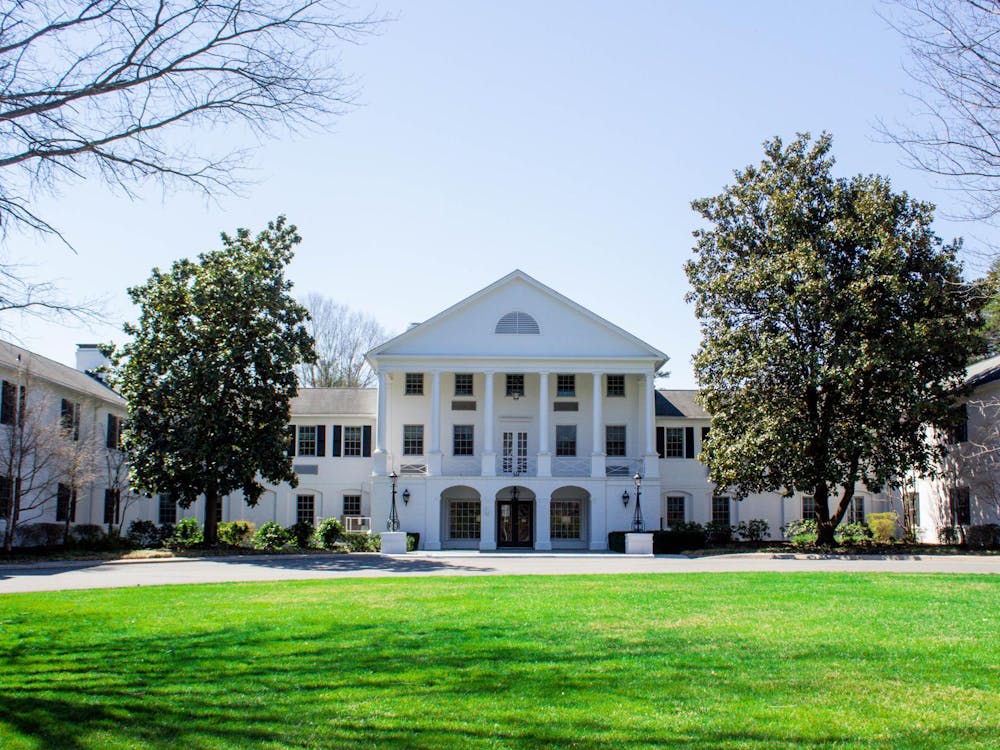A new buzzword has emerged on the pages of major publications from The New York Times to Vogue to describe the divide between a variety of culturally hegemonic groups and their corresponding minority groups in America. An “empathy gap” is the term being used to describe the unbridged distance between races, socioeconomic strata and gender identities everywhere from rural Oregon to Midtown Manhattan.
I argued last week this empathy gap exists between the refugee community in Charlottesville and the student body at the University — a specific example indicative of the even more problematic divide between the black and white communities in the city. However, my column failed to raise a critical question I have been grappling with for months: what group of students at the University is best equipped to bridge this gap? And if, as a white student, that group doesn’t include me, how can I be the best ally possible to students leading that charge? Recently, I have found myself at a loss for pragmatic steps forward.
Last month, I stood in front of a group of 40 high school juniors and answered questions about student life at the University. Their questions about classes and roommate selection skirted around any inquiries of substance, making it all too easy to stand in front of them and spout off anecdotes about my time as a student. I recounted some of my best memories of my time both in and out of class. However, halfway through the Q&A session, a black student in the back corner who I had yet to notice raised his hand and quietly asked about safety on Grounds in light of “recent events.” I stood there flummoxed, realizing I had talked for roughly 30 minutes without addressing some of the most pressing concerns of the only black prospective student in the room.
I subsequently told the students what I have told many assorted groups of parents and teens over the course of the semester. I said first and foremost that the University is not a perfect place. I told them these problems are endemic across college campuses and cities nationwide, but that doesn’t excuse the instances of sexual assault and police brutality at the University. I said we welcome the media attention because it allows us to step into the national spotlight to make meaningful change.
As I turned back to the student, I realized I had not gotten to the heart of his question: As a black male, would he be safe at the University? While I wanted to answer in the affirmative, I wasn’t sure I could. Ultimately, I left it at that, moving on to a student in the front row’s question about Greek life. But I’ve since thought about that moment, and my inadequate response.
I thought of it at the rally for Martese Johnson later that night, when a student speaking was interrupted and told the space was reserved for “black bodies and black voices only.” Though the student was subsequently invited back to the microphone by those who disagreed with the interruption, the comment is reflective of a sentiment shared by many at the University, and I heard similar comments from black students throughout the week.
In my opinion, their comments are completely valid (though they do not need my validation). I cannot begin to empathize with the microaggressions felt daily by black students at the University. Nonetheless, these comments leave me questioning my role as an ally to marginalized communities.
Though I recognize my inherent inadequacy in addressing those concerns — for I speak from a place of the deepest sympathy, but not of empathy — I want to be an effective representative of all members of the student body when I speak to prospective students about enrolling. Addressing minority students’ concerns about attending the University cannot be a job for only the minority community.
This week, the Black Student Alliance, in accordance with 30 other organizations, released a proposal of pragmatic solutions to change the discriminatory climate of the University by “eliminating abuses” through policy solutions and creating a “culture of truth” throughout the student body. Their recommendations on creating the latter are compelling and I believe they are concerted steps towards bridging the empathy gap at U.Va.
Specifically, I believe the proposal’s recommendations on potential class requirements, orientation training on cultural sensitivity and Residence Life programming are a step in the right direction to educate students on the complicated history, and current climate, of race relations at the University. These programs would encourage students to think critically about both their conduct and role as allies to address concerns and challenges the University still faces.
However, if I could add my own personal addendum to the recommendations, I would encourage the Black Student Alliance to consider the efficacy of adding a peer education component to their proposal. Student-led groups such as One in Four, One Less, ADAPT, the Honor Committee and Peer Health Educators rigorously train members to effectively give presentations on their organizations’ missions to student groups and incoming first-years. Similarly, I feel training peer-education teams — comprised of students from all backgrounds and demographics committed to eliminating racial discrimination — to speak to student groups would ultimately be more effective than an administrator or professor leading the discussion and would allow students like me a space to be an effective ally to the minority community.
Lauren Jackson is an Opinion columnist for The Cavalier Daily. She can be reached at l.jackson@cavalierdaily.com.






